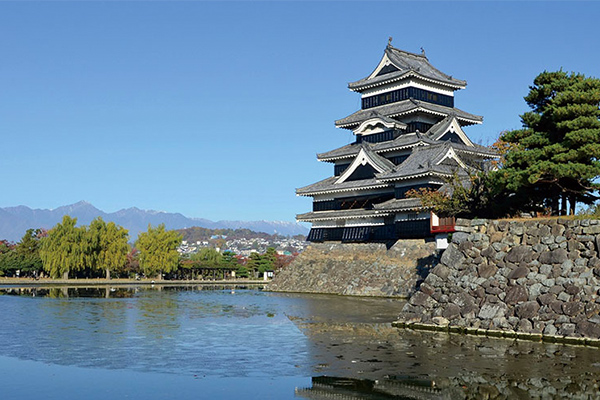Alpine-Takayama-Matsumoto Area Tourist Pass
 Purchasing via online
Purchasing via online
Adult: 19,600Yen (Child: 9,800Yen)
Purchasing from a travel agent outside Japan
Adult: 18,600Yen / Child: 9,300Yen
Purchasing at a station etc. in Japan
Adult: 19,600Yen / Child: 9,800Yen
*Child: 6 to 11 years of age

Tateyama Kurobe Alpine Route

The Tateyama Kurobe Alpine Route is one of the world's leading mountain tourism routes. It passes through the 3,000-meter-high mountains of the Northern Alps. The route is 37.2 km long with a maximum height difference of 1,975 m and is closed from mid-November to mid-April due to snowfall. From April to May, the view of the Snow Valley attracts many tourists, especially during this season when the snow is removed from the road, and stands at 10m and is breathtaking.
Hidatakayama

This area features an old-time streetscape that retains vestiges of the Edo Period as well as historical buildings such as Takayama Jin’ya. Another attraction is the area’s easy access from Nagoya by express train, with no need to change lines.
National TreasureMatsumoto Castle

Matsumoto Castle is the oldest remaining castle in Japan with a five-tiered, six-story donjon (designated as a National Treasure). With the faraway Japan Alps rising in the background, the castle provides spectacular views.
Special Historic SiteNagoya Castle

Nagoya Castle is known as the “zenith of early modern castle design and construction”. After Tokugawa Ieyasu had the castle built in order to show his authority to the world, it proudly prospered as the residence of the Owari-Tokugawa family. (Currently, it is not possible for visitors to enter the castle donjon.)
Gifu Castle

In 1567 (or 1564 by some accounts), Lord Oda Nobunaga captured this castle, then known as “”Inabayama Castle”, and took control of the surrounding region. Subsequently, he changed the name of the region to “Gifu”, and Gifu Castle became his main base for unifying Japan. The current castle structure was rebuilt in 1956, and it is possible to travel by ropeway to the Castle Tower on the top of Mt. Kinka.
Narai-juku

Narai-juku is one of the post towns on the Nakasendo Road, located between Edo and Kyoto. The buildings from this area stretch for about a kilometer and are reminiscent of those days. The town's atmosphere attracts many tourists and often acts as a site for filming famous TV dramas.
Fukushima-juku

Fukushima is one of the post towns on the Nakasendo Road. The Fukushima barrier was one of the four major security checkpoints on the Nakasendo route. Once established, it developed into a large-scale post town. It also acted as the entrance to Mount Ontake, an object of faith. Many of the old buildings no longer remain today due to fire, but the Fukushima barrier was restored and is open to the public as a museum.
Tsumago-juku

Tsumago-juku was a post town on the Nakasendo Road that prospered as a key transportation hub connecting other roads. It was the first post town in Japan that preserved its old townscape, and it still retains the historic atmosphere. Many travelers visit here along with the Nakasendo road that connects the adjacent Magome-juku and its surroundings.
Magome-juku

Magome-juku was an important post town on the Nakasendo Road, with stone-paved slopes lined with buildings that maintain the atmosphere of a traditional post town. The beauty of the stone-paved slopes and the waterwheel, that operates on the waterway running through Magome-juku, are famous photogenic spots. Mt. Ena and the surrounding mountains are visible from the viewing platform. Many travelers visit here along with the Nakasendo road that connects the adjacent Tsumago-juku and its surroundings.